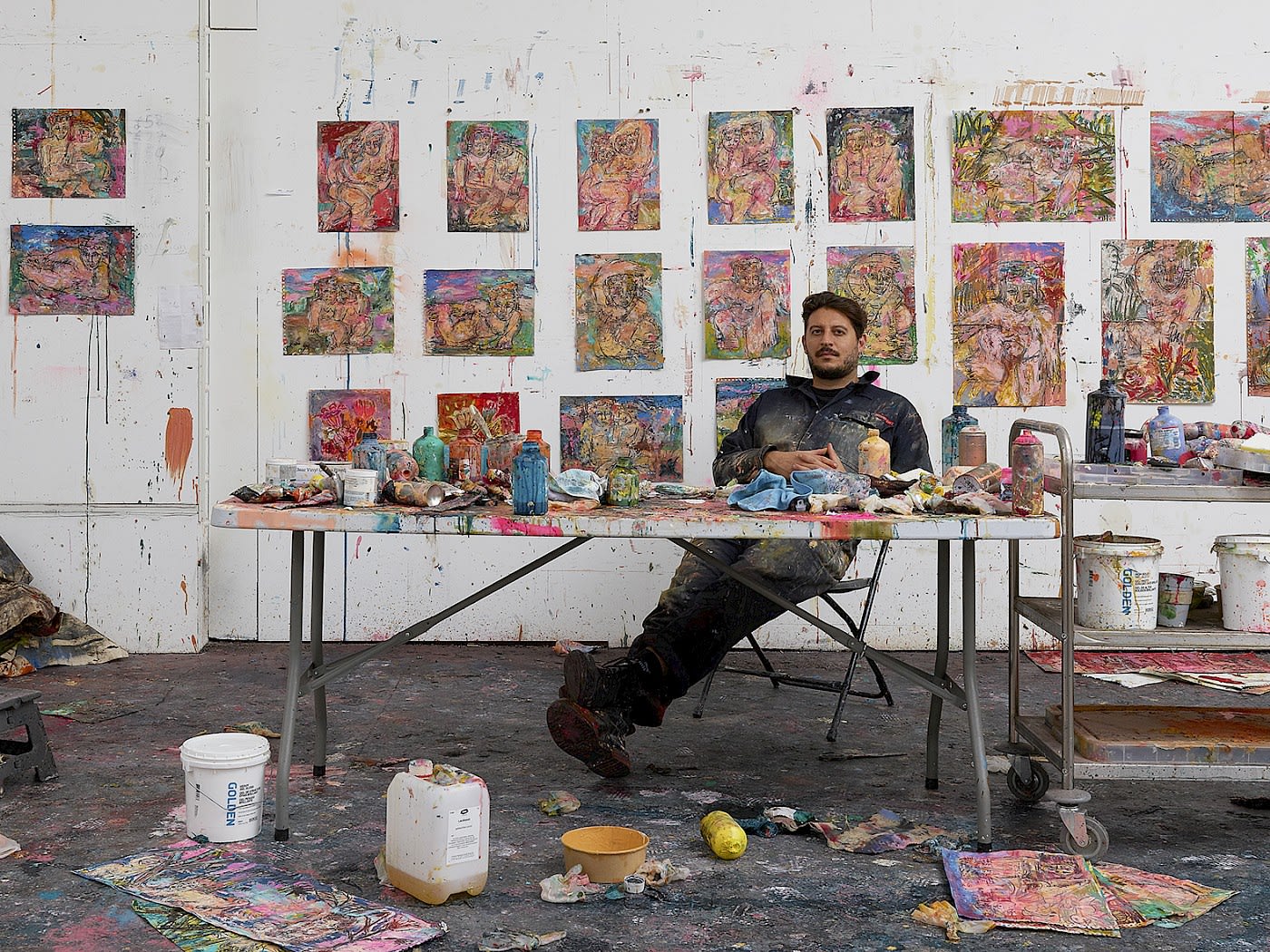-
10 Drawings
Daniel Crews-Chubb’s drawings immerse the viewer in a realm that transcends space and time, inspired by sources both ancient and modern. Describing the impulse behind his ambiguous figures, Crews-Chubb says:
‘I’m always attracted to something a little bit more magical and fantastical. They resonate a little bit more than the reality I’ve been told to believe, because the world seems far more mysterious than that.’
Crews-Chubb begins his drawings with the idea for a painting, sketching out concepts for figures and themes across thick, heavyweight paper that enables him to build up the surface with layer upon layer of paint, so that the viewer’s eye is never allowed to settle. Several of the drawings in the exhibition share themes and colours with the paintings in his November 2021 exhibition at Timothy Taylor London, Humanoids. In spite of these commonalities, Crews-Chubb never repeats a composition: he experiments restlessly, changing colours or transforming a pose or a motif, leaving gestural marks and pentimento across the surface. As such, each drawing represents a miniature world of its own, the culmination of myriad reworkings and revisions. -
-
In their opaque expressions and shifting, monumental limbs, Crews-Chubb’s figures draw visual inspiration from Crews-Chubb’s deep reading of ancient histories and legends, ranging from Hebraic apocalyptic texts to Greek mythology. ‘For me it’s quite clear that the figures are not human. Their alienness allows me to play with the figurative form, to look at gods and goddesses, therianthropes, contorted figures,’ says Crews-Chubb. Yet their whiplash strokes of colour are wholly contemporary, evoking Willem de Kooning’s formal innovations in his vivid, abstract Women series of the early 1950s. Layered compositions of paint dapple across the surface in shades of violet and mauve, pink and green, a mix of ink, pen, spray paint, charcoal, oil pastel, oil stick and acrylic that echoes the granular texture of his paintings on a smaller scale.
In other drawings, Crews-Chubb depicts his creatures emerging from antediluvian natural landscapes of startling vibrance. The titular giant in Giant with flowers (yellow) climbs through a honey-colored grove of flowers that seems to sing with colour and life. Electric blots of spray paint lend the painting a bright charge, as if to echo the buzzing sound of bees or fireflies in the forest around the giant. In these through-the-rabbit-hole portraits, a note of nostalgia resounds for a lush forgotten earth which might have once existed. -
-

-
-
ragmentary headdresses adorn the giants’ head, a formal motif Crews-Chubb is drawn to both for its architectural structure and historical significance. In creating the hybrid anatomical innovations that characterize his work , such as strange headdresses and contorted poses, Crews-Chubb looks to an encyclopaedic variety of sources, from toy action figures to Mesopotamian sculpture, medieval iconography and the Instagram-era phenomenon of ‘belfies’. In his Couples drawings, part of a series begun in 2020, Crews-Chubb explores this pictorial language of contorted figures through themes of closeness, love and claustrophobia. Crews-Chubb is fascinated by the physical possibilities of the body; the contorted figures depicted in his Couples paintings recall gargoyles and yoga poses, ancient Egyptian hieroglyphs and Mesopotamian idols.
Two Flying Man drawings see a figure related to Icarus, who flies high in the sky above a layered terrain of richly hued cobalt, green and gold. The story of Icarus and his father Daedalus, a master craftsman at the court of Minos, raises timeless questions of ambition and artistic purpose. ‘In ancient times, what did art mean to its creators?’ Crews-Chubb asks rhetorically, before answering: Art was conceived as sacred offerings to gods or emperors, gifts for mercy or goodwill. Elusive and imaginative, the complex figures in his work resonate a totemic spirituality that recalls our earliest beliefs of the hypnotic power of images. -

-
-













